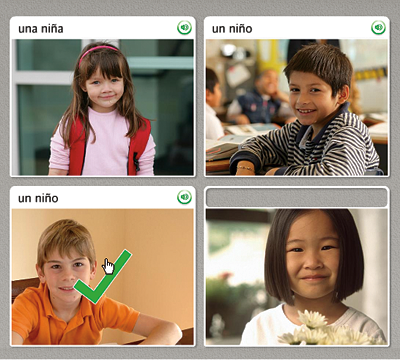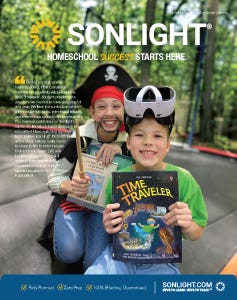We use cookies for performance, analytics and marketing. By using this site, you agree to our use of cookies. For more information, view our Cookie Notice and Privacy Policy.
How do Rosetta Stone programs work?
Enjoy high motivation through loads of auditory, visual, chronological and numeric feedback...
Just as a young child must guess what the people around her are saying and constantly check her hypotheses against what people do when they say different words, so is your "immersion" into a foreign language with this program.

When you hear the native-speaking narrator say a word or phrase, you simply choose the picture you think matches what's been said.
Here's how Rosetta Stone® works:
When I first began to use the program, four photos showed on my screen and a voice spoke—the voice of a native speaker of the language I wanted to learn. It was my job to figure out which photo the speaker was referring to and to click on it.
Just as a young child must guess what the people around her are saying and constantly check her hypotheses against what people do when they say different words, so it is with Rosetta Stone.
You make hypotheses and click on pictures to find out if you've guessed correctly. If you're right, a cheerful sound encourages you, and your score goes up. If you guess incorrectly, you'll hear an unhappy sound... and (for now) move on.
As you progress you hear, for example, in French: "The vieille house." By this point you know the words for the and house. You have no idea what vieille means. You see pictures of two different houses and two cars. You have a 50-50 chance of hitting the right house.
After three or four sets of pictures which show you a vieille this or that, the computer says "The vieille woman," and there are only two pictures of women, one of two young women and another of an older woman. Obviously, the only picture of a woman—and, therefore, the only picture of a vieille woman (whatever vieille means)—has got to be the picture of the older woman. And suddenly you have a brainstorm. You think back and realize that all the sets of pictures with vieille things have included some things that are old, and some that are new. "Does vieille mean 'old'?" You check your hypothesis. After one or two more rounds, you know: yes, vieille means "old."
All the while you click on pictures, the computer applauds your correct answers, mildly chides you when you guess incorrectly, tallies your score, and keeps track of the time you're spending. When you get to the end of a 100-point "lesson," you discover you have spent, say, 3 minutes and 37 seconds and gotten a score of 93 right answers and 7 wrong.
Not bad! You're encouraged. "Hey! This is pretty easy!... But could I go faster? Can I be more accurate? Can I go faster—and maintain my accuracy? I'll bet I can!" And so you'll be off to the next lesson.
With all of its auditory, visual, chronological and numeric feedback, Rosetta Stone® is highly motivational, just the ticket to engage under-enthusiastic students.
Browse Rosetta Stone programs now!
Learn more about your Rosetta Stone® course



